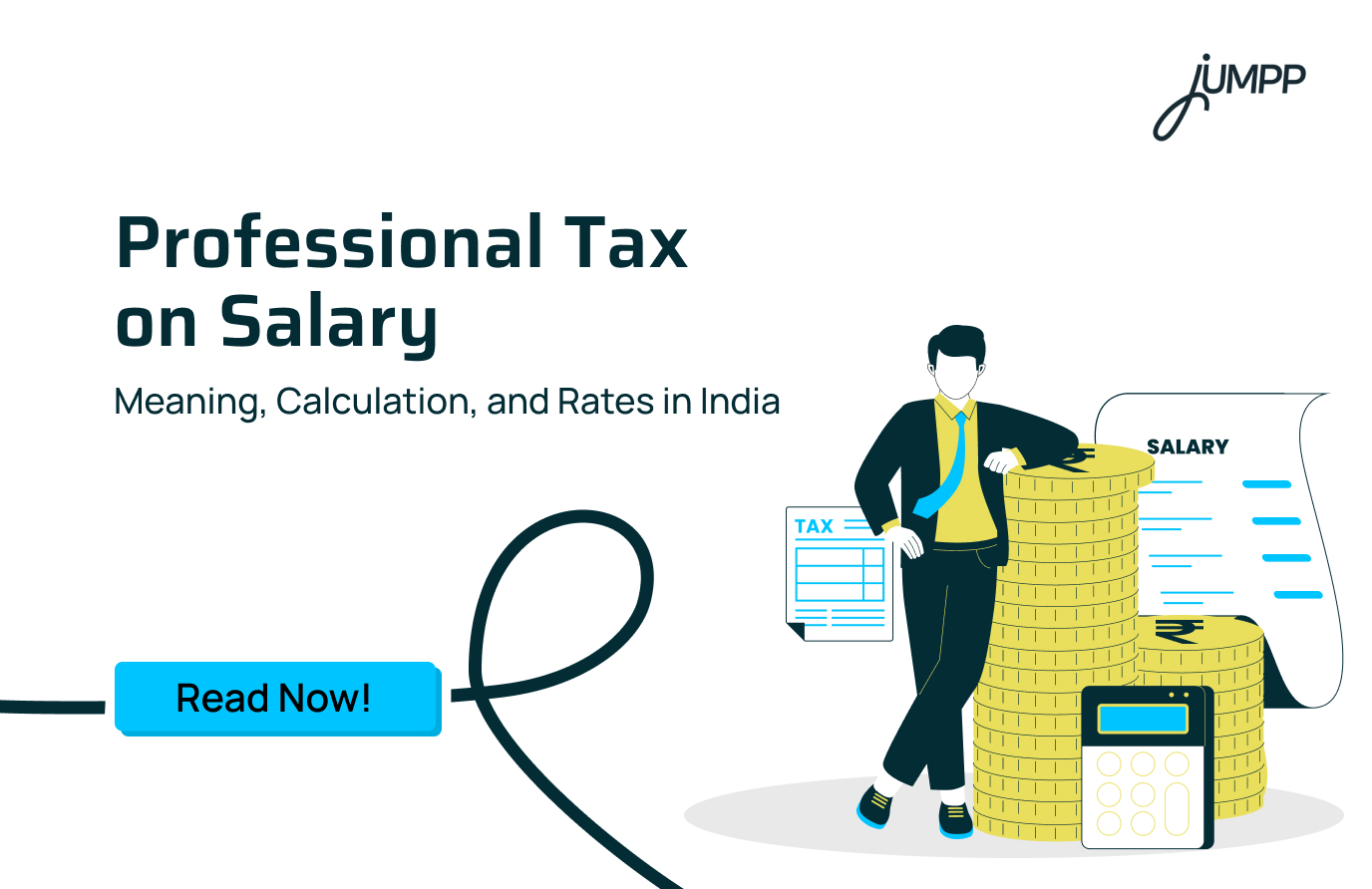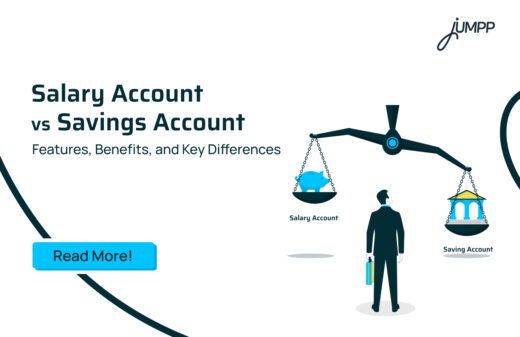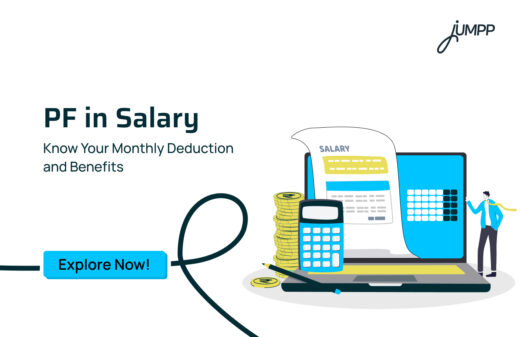Professional Tax on Salary- What is it and Who Levies it?

Every month, your salary may show a PT deduction. This is a professional tax. It is charged by your state based on income slabs, with a yearly limit of ₹2,500. It is basically a direct tax levied on individuals earning income from employment, professions, or trades.
Do you know the latest professional tax rate in India? Or, do you know how to calculate professional tax on salary? And, who actually collects the professional tax?
Let’s discover it all!
Professional Tax Meaning
Professional tax is a state-level statutory tax that is applied to individuals earning income from salaries, businesses, or professional services. These could be doctors, lawyers, chartered accountants, and freelancers.
- Unlike income tax, which is governed by the central government, professional tax is administered by state commercial tax or professions tax departments. Also, its rules vary by state.
- Under Article 276 of the Constitution, the maximum annual professional tax a state can levy is ₹2,500 per individual.
However, the exact deduction depends on the state and the employee’s monthly salary. States have flexibility in defining slabs, thresholds, and payment schedules.
What is Professional Tax in Salary?
For salaried employees, professional tax appears as a monthly deduction from the salary. It actually reduces your take-home amount.
Professional tax is also tax-deductible under Section 16(iii) of the Income Tax Act.
What is PT in Salary Slip
On a salary slip, “PT” stands for Professional Tax. It reflects the monthly amount deducted by the employer and remitted to the state.
- In states where PT applies, the salary slip will include the PT deduction line.
- In states where PT is not levied, the PT line may appear blank or be absent entirely.
Don’t let deductions like professional tax shrink your take-home pay without a plan. Explore investment options that match your goals and risk appetite. Take the first step towards smarter investing now!
What are the Features of Professional Tax?
1. State-specific nature
Unlike income tax, professional tax is not uniform across the country. Each state government has the authority to impose and regulate this tax.
2. Annual limit
The maximum amount chargeable in a financial year is fixed at ₹2,500.
3. Deduction from salary
For employees drawing a salary, employers play the role of tax deductor. They calculate the amount payable according to your income slab. This is deducted at source and deposited it with the state’s Commercial Tax Department.
4. Income tax benefit
An often-overlooked aspect is that professional tax paid is allowed as a deduction under Section 16(iii) of the Income Tax Act.
This benefit, however, is available only under the Old Tax Regime.
What is the Professional Tax Rate in India?
The rules are not uniform across India. The higher the income, the higher the professional tax payable. But it is always within the limits prescribed.
Thus, no state can charge more than ₹2,500 in a financial year from any individual.
State-wise Highlights (2025–26)
- Maharashtra: ₹200 per month for most slabs.
- Karnataka, Tamil Nadu, West Bengal: ₹0 below threshold; ₹200-type rates above threshold.
- Andhra Pradesh: ₹0 up to ₹15,000; ₹150 for ₹15,001–₹20,000; ₹200 above ₹20,000.
- Assam: ₹0 up to ₹10,000; ₹150 for ₹10,001–₹15,000; ₹180 for ₹15,001–₹25,000; ₹208 above ₹25,000.
- Kerala: Half-yearly slabs up to ₹1,250 per half-year.
- Bihar: Annual slabs up to ₹2,500 for income above ₹10 lakh.
- Punjab: For annual gross income up to ₹2,50,000: No professional tax is levied.
For annual gross income of ₹2,50,001 and above: A fixed amount of ₹200 per month is deducted.
How to Calculate Professional Tax on Salary
Professional tax is calculated based on your gross monthly income, and the exact liability depends on the slab rates notified by the state government where you are employed. Since this is a state-level levy, the slabs and exemptions are not uniform across India.
To calculate your liability:
1. Check the professional tax slab rates applicable in your state. Each state issues a chart with income brackets and the corresponding monthly tax.
2. Match your gross income to the slab. You must remember that your gross income includes salary and certain other earnings, such as income from investments, if considered under state rules.
3. Apply the monthly deduction. The amount is usually fixed for the slab and does not vary month to month, except in states where February carries a higher deduction to reach the annual cap of ₹2,500.
If you are employed in Maharashtra and your monthly gross income is above ₹25,000, the professional tax applicable is ₹200 every month. In February, the deduction rises to ₹300 so that the total annual deduction reaches the maximum of ₹2,500.
Who Collects Professional Tax?
Professional tax is collected by the state government through its commercial tax or professional tax department.
- Salaried employees: Your employers deduct and remit PT to the state as per prescribed schedules.
- Self-employed professionals: Pay PT directly based on income and state regulations.
Who is Responsible to Pay Professional Tax?
- Employees: Employers must deduct professional tax from the salaries of employees and deposit it with the state government.
- Employers/Business Owners: Any entity carrying on business or profession—whether it is a company, partnership, or sole proprietorship- is also required to pay professional tax on its own account.
To do this, employers must obtain both a Professional Tax Registration Certificate (for their business liability) and a Professional Tax Enrolment Certificate (to deduct from employees). Some states require separate registration for each office or branch.
- Self-employed individuals: Even without employees, individuals carrying on a trade or profession are liable to pay professional tax if their income crosses the prescribed limit.
Understanding professional tax is just the first step to taking control of your salary. Learn how to budget, set real financial goals, and plan your money. Financial planning isn’t just for the rich—it’s how you make your hard-earned salary work for your life, not just for deductions.
How to Pay Professional Tax?
Professional tax can be paid both online and offline.
Most state governments provide portals where employers and individuals can register, generate challans, and pay the tax digitally. Offline options are also available at designated state offices.
If you are a salaried individual, there is no separate action needed because the employer handles deduction and payment. Self-employed individuals, however, must ensure timely compliance by registering and making payments directly.
Are there any Exemptions in Professional Tax?
While professional tax is meant for all income earners, states have mentioned exemptions for certain categories.
Here are some of the common exemptions:
- Members of the Armed Forces governed by the Army, Air Force, or Navy Acts
- Individuals with disabilities such as blindness, deafness, or other permanent physical or mental disabilities
- Parents or guardians of children with disabilities
- Senior citizens above 65 years of age
- Badli workers (temporary workers in factories)
- Women agents under the Mahila Pradhan Kshetriya Bachat Yojana
- Charitable hospitals in areas below the taluk level
- Individuals running educational institutions up to Class 12 or pre-university
- Foreign nationals employed by the state
Consequences of Violating Professional Tax Regulations
Non-compliance with professional tax provisions attracts penalties. The nature and quantum of penalties differ from state to state, but common consequences include:
- Late payment fines are often calculated as a percentage of the unpaid tax
- Penalties for failing to register within the prescribed timeline
- Interest charges on delayed payments
While professional tax reduces your take-home salary, building secure savings is equally important. Explore What is a Fixed Deposit? to understand how FDs can help you grow your money safely while balancing mandatory deductions.
Conclusion
Professional tax is more than just a line—or the mere ₹200 deduction on your salary slip. Understanding how it is calculated, the latest rates, exemptions, and who is responsible for payment helps you plan your finances better.
In the end, knowing about professional tax protects both your money and your future.
Professional Tax on Salary- FAQs
No, only states that have enacted professional tax laws levy PT. Employees working in states without PT will not see deductions on their salary slips.
Income tax is collected by the central government based on overall income and slabs. On the other hand, PT is collected by the state and is based on salary slabs or professional income.
Yes, self-employed individuals, including freelancers and professionals, pay PT directly to the state according to the applicable slabs.
Yes, there is a constitutional cap is ₹2,500 per financial year per individual.
PT is shown on the salary slip under the line item “PT”. Employees can also verify with their employer or the state tax department.
The process of calculating PT for a salaried employee includes checking state-specific rates, identifying gross monthly income, applying the relevant tax slab, and deducting the fixed amount from the salary each month. Your employer handles remittance to the state government.
No, professional tax is not mandatory in Delhi as the state does not impose this levy.
Yes, it is mandatory in states that levy it, and the employer is responsible for deducting and depositing it if the income exceeds the state threshold.
Source– https://www.tgct.gov.in/






